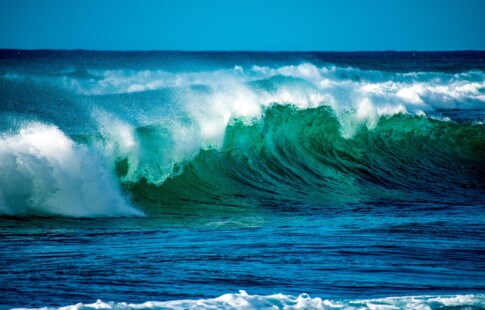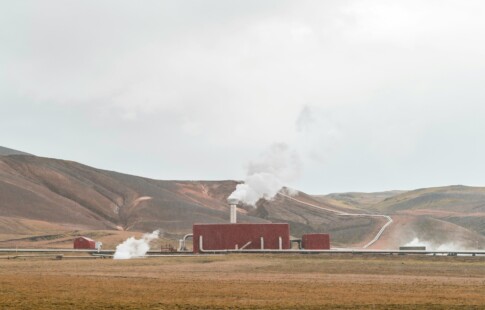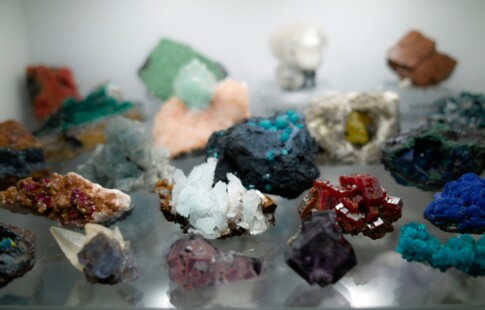
6 Tidal Energy Advantages and Disadvantages
We are reader-supported. When you buy through links on our site, we may earn affiliate commission.
Energy demand and consumption are rising with the world’s population as it crosses the eight-billion mark. Fossil fuels have proved detrimental to the planet, so people are looking for alternative and renewable sources. Solar, wind and nuclear are three of the prominent options. But what about tidal power? What are the advantages and disadvantages of tidal energy? This article will outline how the planet stands to gain (or suffer) from this source.
What Is Tidal Energy?
As the name suggests, tidal energy comes from tidal waves in water. The power comes from the rising and falling of tidal waves throughout the day. It’s a fascinating interaction with Earth, its moon and the sun. In many locations, people place a turbine inside the tidal stream. Then, the turbine harnesses energy from the waves passing through. This method offers an opportunity for sustainable power, but it’s not a new concept.
The concept of tidal energy has been around for well over a thousand years. People used tidal energy for grain mills to produce bread, rice, oatmeal and other dishes. One of the first tidal energy generators is in La Rance, France. The French constructed this system in 1966, and it still works today with a powerful 240-megawatt capacity.
What Locations Use Tidal Energy?
In the 21st century, tidal energy has continued to rise as renewable energy sources become integral to the planet’s health. You can see tidal energy in numerous countries worldwide. The most extensive tidal energy production system is in South Korea at the Sihwa Lake Tidal Power Station. Other major tidal energy producers include the United Kingdom (specifically Wales and Scotland), the Netherlands, China and Russia. But the facilities in France and South Korea are by far the most significant.
What Do the Advantages of Using Tidal Power Include?
Why do countries like South Korea and France use tidal energy? Why don’t other countries like the US, Japan and other world leaders utilize it, too? Though it’s clean energy, tidal power does have some caveats. These six tidal energy advantages and disadvantages show why only particular areas have taken advantage of it.
1. Renewability
The first advantage may be the most significant. Tidal energy is renewable, leading many countries worldwide to explore their options for harvesting it. The energy produced by tidal waves requires no fossil fuels for harvesting, so you can consider it clean energy. It’s also renewable because harvesting the power doesn’t deplete the source. You’re taking energy from the tidal waves, but you’re not reducing the amount of water in the ocean, for example.
2. Low Carbon Emissions
Tidal energy is renewable, and cleanliness means there are low carbon emissions associated with it. The only carbon emissions come from constructing the power plants, maintenance and recycling. But once the tidal energy plant is up and running, the mechanism doesn’t emit greenhouse gases (GHG). It’s an ideal replacement for oil, gas and other harmful fuel sources.
3. Reliability
As long as the Earth, moon and sun exist, tidal energy will be in use. In life, they say the guarantees are death and taxes, but you can also add the daily rising tide there. The Earth’s rotation and the moon’s orbit create the ideal conditions for waves if you can find the right places for them. Locations like South Korea and France will find great use of tidal energy for decades.
In fact, tidal energy is one of the most reliable energy sources on Earth. It’s more dependable than solar, wind and the other conventional methods you see today. Solar energy is adequate most of the time, but it won’t work when bad weather happens. Wind energy is unpredictable because the wind itself can decrease for a long time. But tides are highly predictable. They go through the same process daily, with minimal or no changes.
What Do the Disadvantages of Using Tidal Power Include?
1. Availability
Unfortunately, only some locations can take advantage of tidal energy. Geography is one of the obstacles many countries face in producing this renewable energy source. There are oceans all over the planet, so why can’t more locations use tidal energy? The problem lies with the tidal waves themselves.
Building an energy barrage requires locations where the tide’s range is at least 10 feet. Unfortunately, the United States doesn’t have many options to fulfill this requirement. Currently, researchers are looking at the coasts of Alaska and Maine because they may have enough range to produce tidal energy.
2. Price
Geography is a significant barrier to widespread tidal energy, but financial factors are another drawback. The concept of tidal energy is relatively simple. However, the cost of installing mechanisms is prohibitive. Many locations need help to afford the high price tag along with the infrastructure.
One reason for the high cost is durability. Tidal energy barrages must be extremely strong to deal with ocean currents. Another concern for industry experts is the cost of energy per hour. A study from the Department of Energy shows that tidal energy costs nearly $280 per megawatt hour. By comparison, solar and power can go as low as $22 megawatt per hour.
3. Environmental Impact
Environmental impact is another concern for energy producers. Tidal energy doesn’t produce GHGs, making it a positive for the air. But it could harm marine life and ecosystems by damaging habitats and throwing them off balance.
A study from the School for International Training reviewed the adverse environmental effects of a potential tidal energy plant if developers constructed one in the country. These primary concerns included noise pollution, rising water levels and reduced water quality. Rising ocean levels are already a worldwide concern due to global warming so tidal energy could worsen that issue.
Tidal Energy Advantages and Disadvantages
The time is now to push for renewable energy sources like solar and wind power. But what about other means, like tidal energy? Harnessing power from tidal waves has proved to be incredibly difficult because of geography and costs. But some countries like France and South Korea have taken advantage of this renewable energy source for over two decades.
Will the US follow with tidal energy barrages in Alaska, Maine or elsewhere? Finding the means to build a plant could significantly impact America’s renewable energy goals. Tidal energy’s advantages and disadvantages weigh heavily on location and finance.
Share on
Like what you read? Join other Environment.co readers!
Get the latest updates on our planet by subscribing to the Environment.co newsletter!
About the author

Steve Russell
Steve is the Managing Editor of Environment.co and regularly contributes articles related to wildlife, biodiversity, and recycling. His passions include wildlife photography and bird watching.





